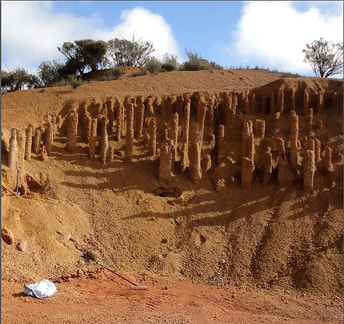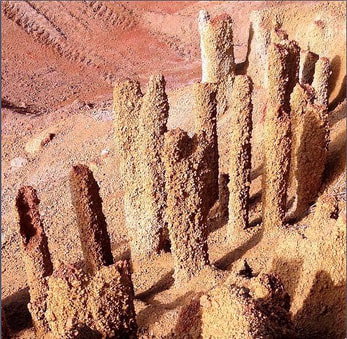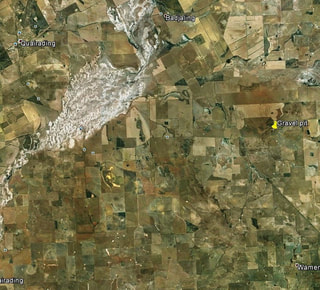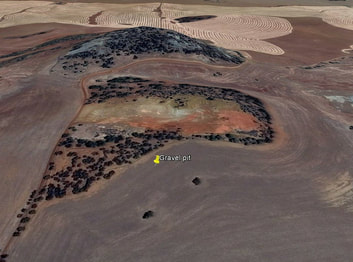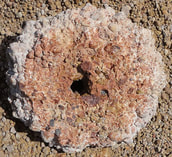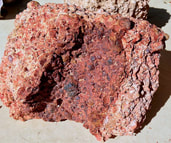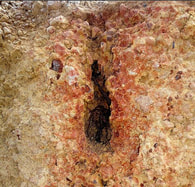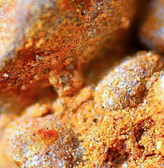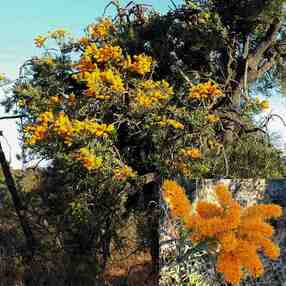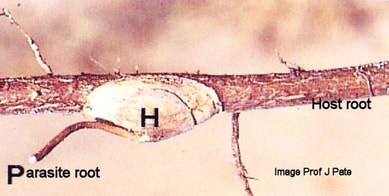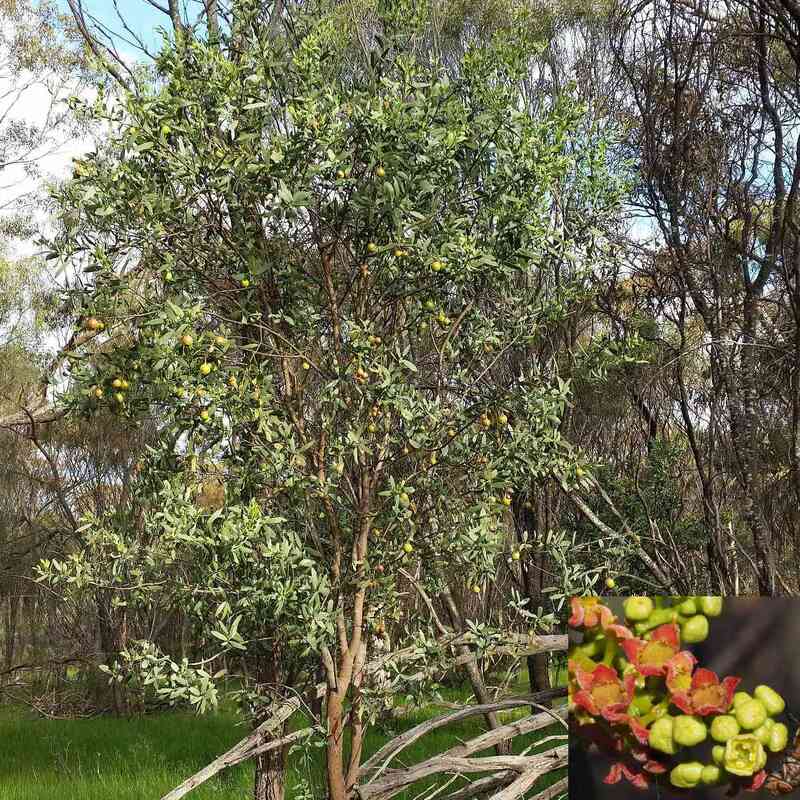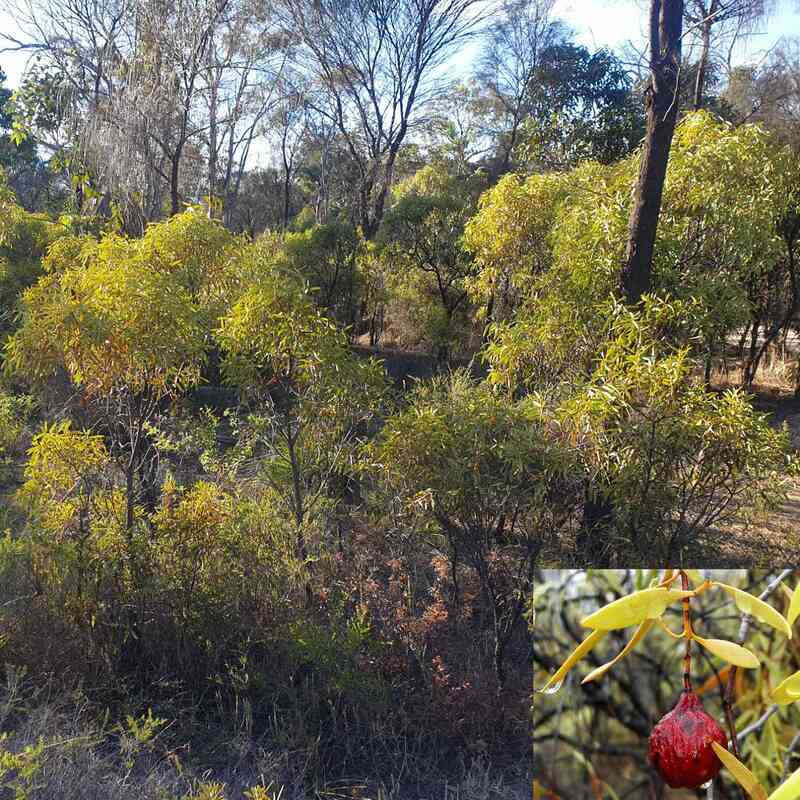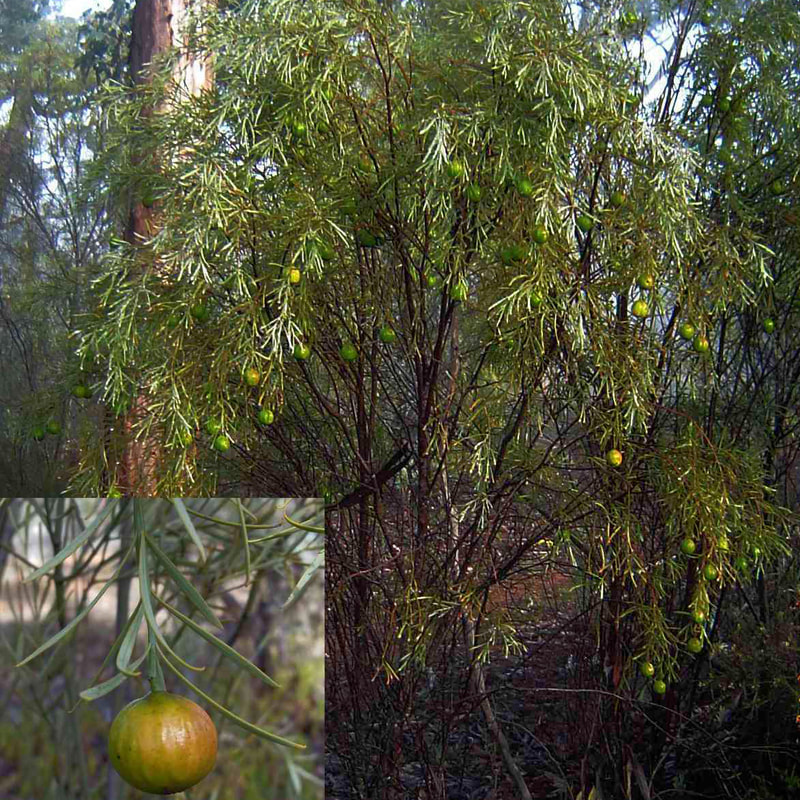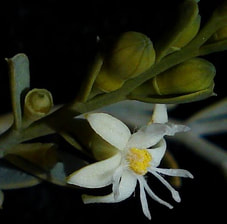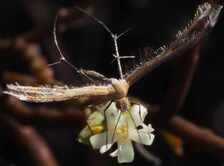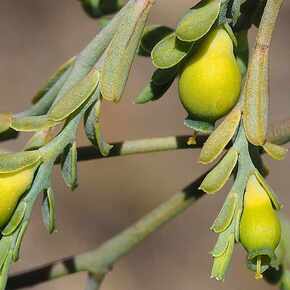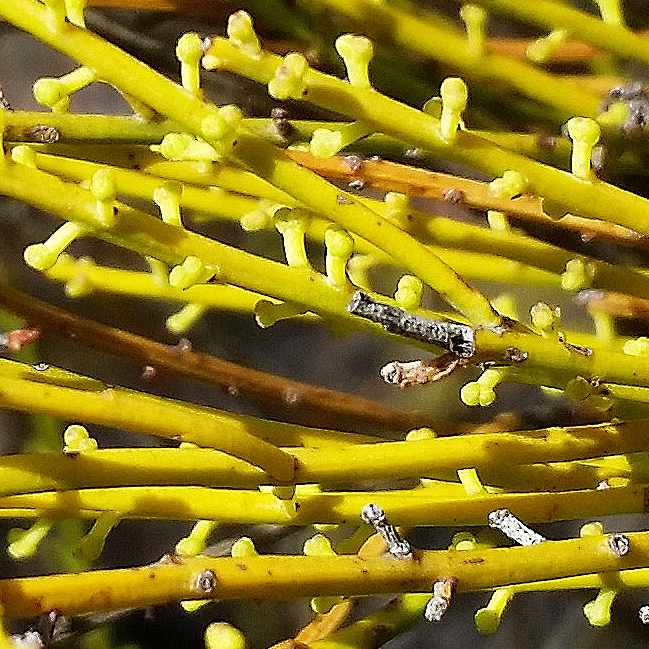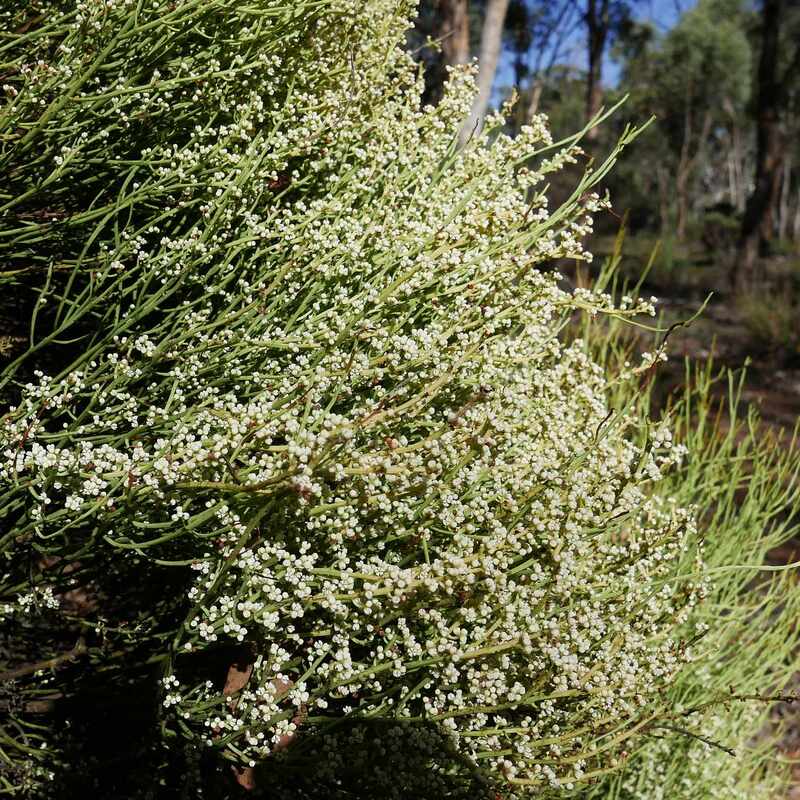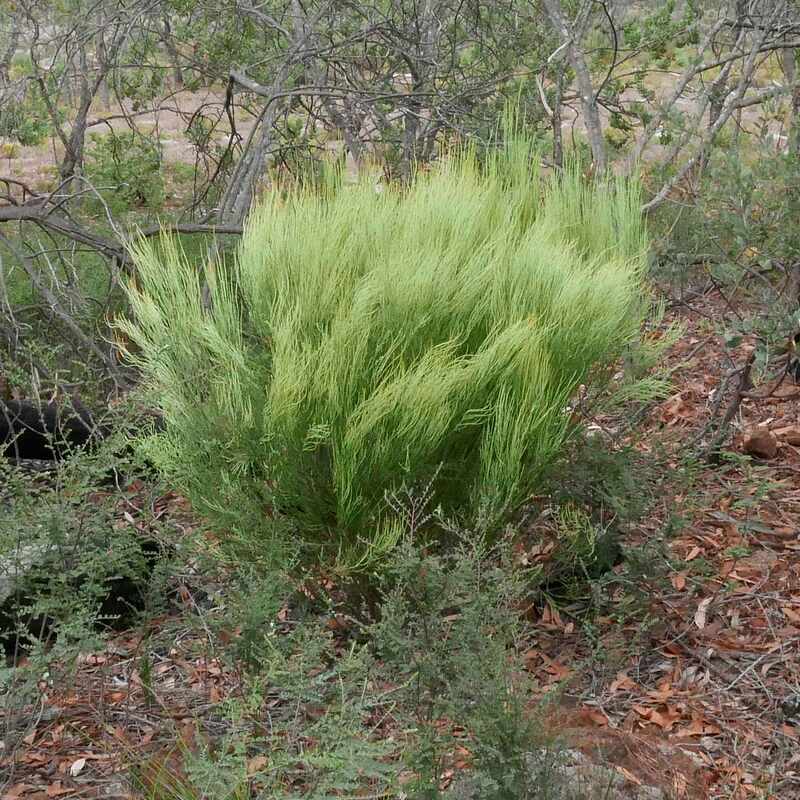These hollow ironstone pipes are exposed in a gravel pit on private property south-east of Quairading. The pipes start about 2 metres below the surface and continue into the gravelly clay base of the pit. Equally amazing is that this is an ancient sand deposit on a ridge overlying granite/dolerite bedrock.
This raises some questions
· How did a sand dune form on a ridge in the wheatbelt?
· How did the sand turn into gravel and what causes the ironstone pipes?
We know that these are aeolian deposits because of the uniform sand grain size.
This blog describes how these plants and associated bacteria create lateritic soils.
This spot is more complicated than most in being an old sand deposit over reddish clay formed from dolerite. My guess is that deep plant roots transported iron and aluminium up from depth up to the subsoil where it was converted into gravels, and deposited around the root channels to form the ironstone pipes. The loose sandy gravel flowed away from the pipes when the pit was excavated.
Despite being tough rocks, on close examination the pipes are just fine sand that has been cemented together by aluminium (white) and iron (yellow/orange/red) oxides and silica (not obvious).
